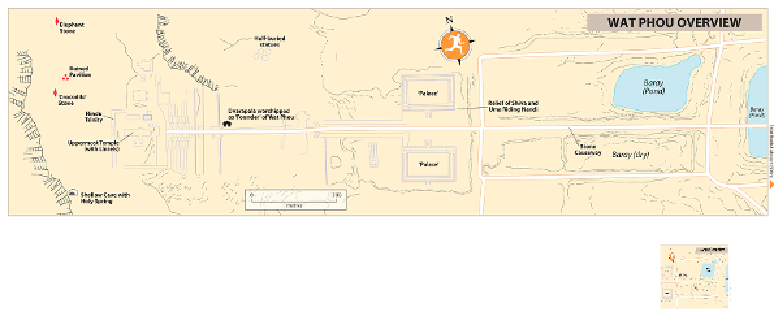Travel Reference
In-Depth Information
Wat Phou (“Mountain Monastery” in Lao) is actually a series of ruined temples and shrines
dating from the sixth to the twelfth centuries. Although the site is now associated with
Theravada Buddhism, sandstone reliefs indicate that the ruins were once a
Hindu place of
worship
. When viewed from the Mekong, it's clear why the site was chosen. A phallic stone
outcropping, easily seen among the range's line of forested peaks, would have made the site
especially auspicious to worshippers of Shiva, a Hindu god that is often symbolized by a
phallus.
Archeologists tend to disagree on who the original founders of the site were and when it
was first consecrated. The oldest parts of the ruins are thought to date back to the sixth cen-
tury and were most likely built by the
ancient Khmer
, although some experts claim to see
a connection to Champa. Whatever the case, the site is still considered highly sacred to the
ethnic Lao who inhabit the region today, and is the focus of a
festival
in February, attracting
thousands of Lao and Thai pilgrims annually.
ZOOM
LEFT
ZOOM
RIGHT
The site
At the entrance to the site, a small
museum
houses pieces of sculpture found among the ruins
as well as some said to have belonged to Prince Boun Oum. The
stonecauseway
leading up
to the first set of ruins was once lined with low stone pillars, the tips of which were formed
into a stylized lotus bud. On either side of the causeway there would have been reservoirs
known in Khmer as
baray
. As ancient Khmer architecture is rich in symbols, it is surmised
that these pools represented the oceans that surrounded the mythical Mount Meru, home of
the gods of the Hindu pantheon.
Just beyond the causeway, on either side of the path, two megalithic structures of sandstone
and laterite mirror each other. According to local lore, they are segregated
palaces
, one for


